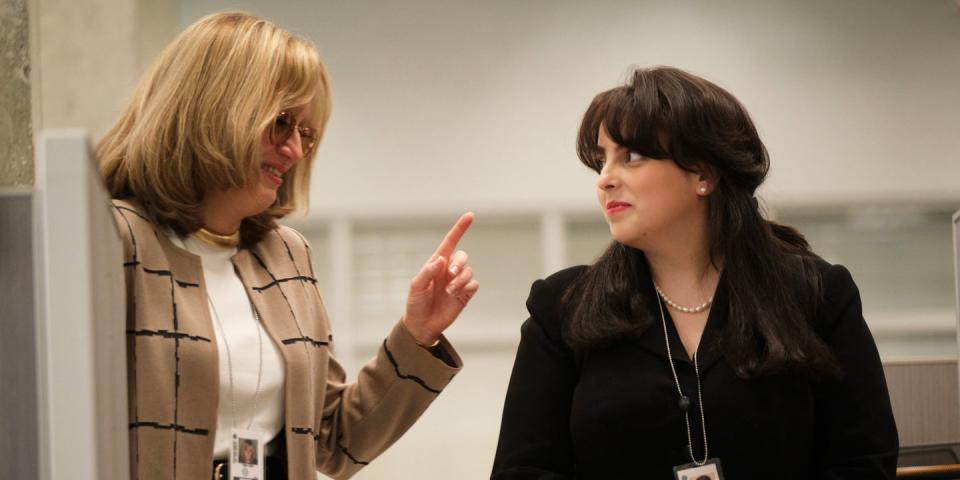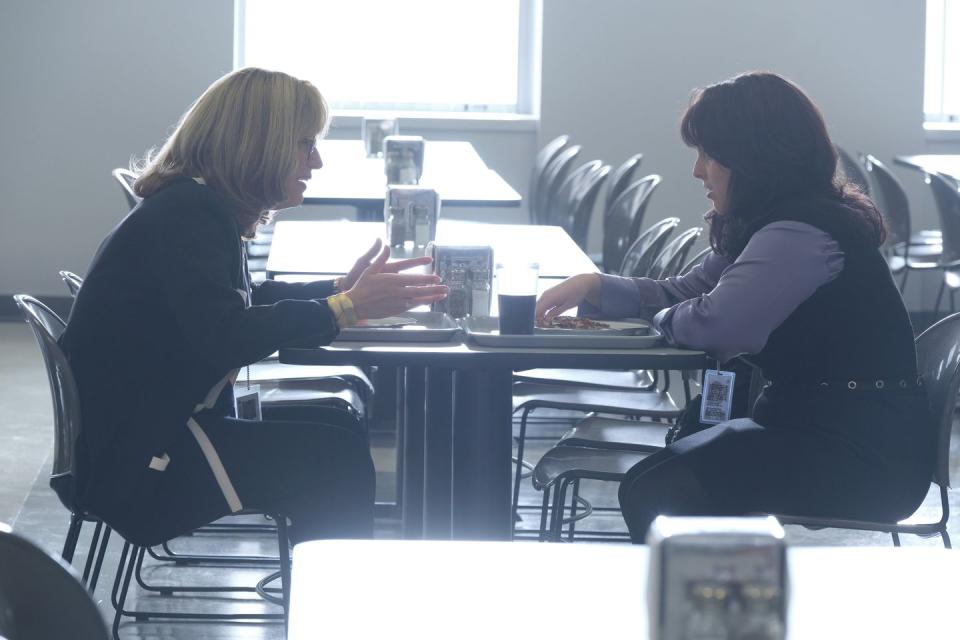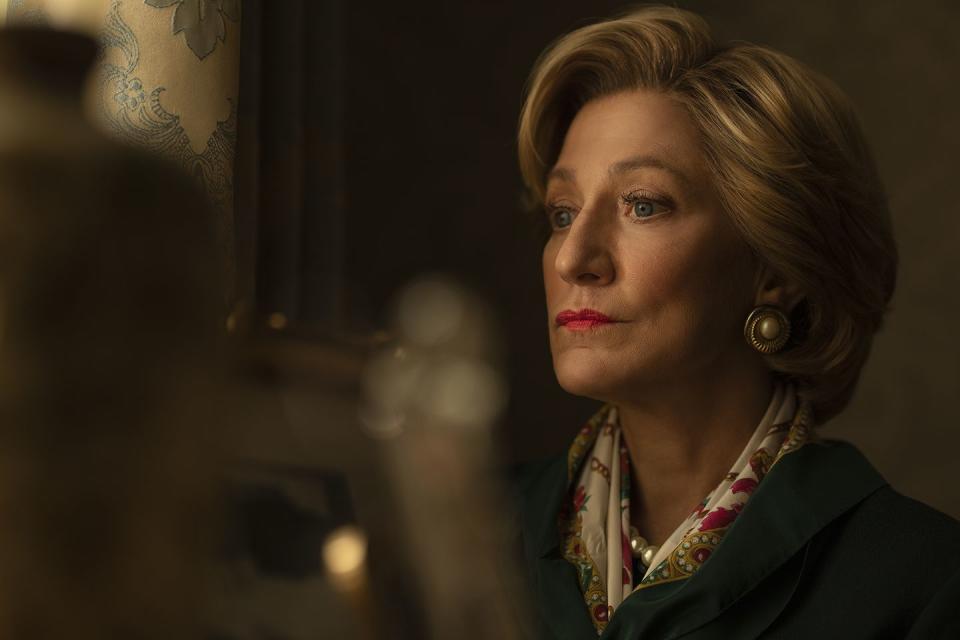'Impeachment: American Crime Story' Views the Clinton–Lewinsky Scandal Through a Feminist Lens

President Bill Clinton's impeachment—and the infamous affair between him and then White House intern Monica Lewinsky that preceded it—is one of the most defining American scandals of the 20th century.
The moment in history is reimagined by mega-producer Ryan Murphy and showrunner Sarah Burgess in FX's Impeachment: American Crime Story, with the two approaching their retelling of the 1998 scandal in a different manner than most who lived through the event remember. Though the incident forced the public to reevaluate their comfort level with openly discussing matters of sex and the abuse of power, the press frenzy that engulfed Monica Lewinsky, Arkansas state employee Paula Jones, and the scandal whistleblower herself, Linda Tripp, illuminated the deeply misogynistic undertones synonymous with media coverage at the time. Rather than tell their story through that same lens, Murphy and Burgess instead took a feminist approach: They focused on the impact this series of events had on Lewinsky, Jones, and Tripp, and how their lives were forever altered not just by the president's misdeeds, but by the public's shame cast as a result of the media's harsh coverage.
"It's been three years now since I was sort of first approached about [the show], and at first, I wasn't sure about doing it, because I was a kid when it happened," Burgess tells BAZAAR.com. "So I kind of knew the story and that it was the big political scandal and how Monica Lewinsky was reduced to this two-dimensional figure who everyone seemed to take shots at constantly. I wasn't sure that I was the writer for it [initially]. I didn't feel grabbed by a story that was just going to be Bill Clinton versus [lawyer and federal investigator] Ken Starr. What really eventually did pull me in was when I had read enough to understand that I could write the story from the point of view of Monica and Linda meeting in this office, in the Pentagon, that neither of them wants to be in, in the mid '90s, with them both having been jettisoned from the White House."

For Burgess, the show's story at its core is about the relationship between Lewinsky (played by Beanie Feldstein) and Tripp (Sarah Paulson), more so than Lewinsky and Clinton (Clive Owen), and how their private and personal phone calls dubbed as innocent banter between two frustrated coworkers became damning evidence that nearly shut down the United States government.
"It was stunning the way that Monica and Linda are talked about as kind of dumb women chatting after work about diets, and how silly and pathetic that they accidentally caused this political crisis," Burgess shares. "I read a lot of interviews with the real Linda and the way that she spoke, and the fact that she had been jettisoned from the White House and was so frustrated by that. It all was so complicated. But it was also funny and not always noble, but really, truly human, and it showcased that enormously complicated character to me. I really wanted to understand why someone would do what Linda did. So that through those two characters, I think I got pulled into the opportunity to write them."
The series explores the inner workings of Tripp and Lewinsky's friendship—as well as takes an intimate look at Lewinsky's emotionally taxing affair with President Clinton—but viewers may be surprised to know that they won't hear very much from then First Lady Hillary Clinton, played by The Sopranos star Edie Falco. Throughout the episodes, the First Lady is mentioned almost always in an eerie looming manner; it's not until the latter half of the season that she appears: poised, professional, slightly cold—classic Hillary. We hear about her more than we see her, and according to Burgess, that was intentional, as they wanted to stay close to their mission of focusing on the fraying friendship between Lewinsky and Tripp.

"Only when Monica and Linda's story expands to include other people like Ken Starr, like the FBI, and then like Hillary Clinton, and then the U.S. and international media, and so forth—only then are those characters activated," Burgess says. "So essentially, when the story lands on the life of Ken Starr, you see him become a true character on the show, and the same thing will be true of Hillary Clinton."
Impeachment is much more than a mere retelling of the most salacious White House scandal; it provides an intricate look at how the public viewed the event then and how the masses interpret it now.
"I'm very mindful that this will be received by the different generations in different ways, because I know that for baby boomers, this was very much a part of their lives," Burgess says. "I'm very interested to see how those people probably feel like something that resonant can't reemerge in their lives. It was over a hundred years when anyone was impeached until Clinton, and now we've had a second impeachment since then. There's something about the dynamics of Washington and the dynamics of American culture that I think resonates today.
"I do think, too, that what happened to Monica Lewinsky was an extraordinarily extreme level of fame that was put on her shoulders through none of her own desire," Burgess continues. "That sort of intense public shaming is something that comes from sort of an undercurrent of ancient misogyny. There's clearly some cultural appetite for the destruction of a young woman—and I think that stuff is still with us."

But will the series ultimately shift the way the public has viewed Jones, Tripp, and especially Lewinsky? Burgess isn't sure, but she ultimately hopes that it makes viewers contemplate how far—or maybe not—society has come in how we talk about women who choose to come forward with their truth.
"When this all happened, everything was perceived in black-and-whites. People either hated Bill Clinton or felt very defensive of him, everyone attacked Monica Lewinsky, everyone saw Linda Tripp as this cartoonish supporting character villain, and people ultimately just dismissed Paula Jones," Burgess says. "Of course, the idea was to bring those three women in the front and center, through their point of view, and inevitably people will draw their own conclusions, and I hope that they see more gray. I think [they're] old enough perhaps to reconsider what they thought at the time with all the new information they'll have."
You Might Also Like

